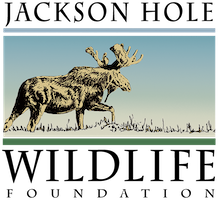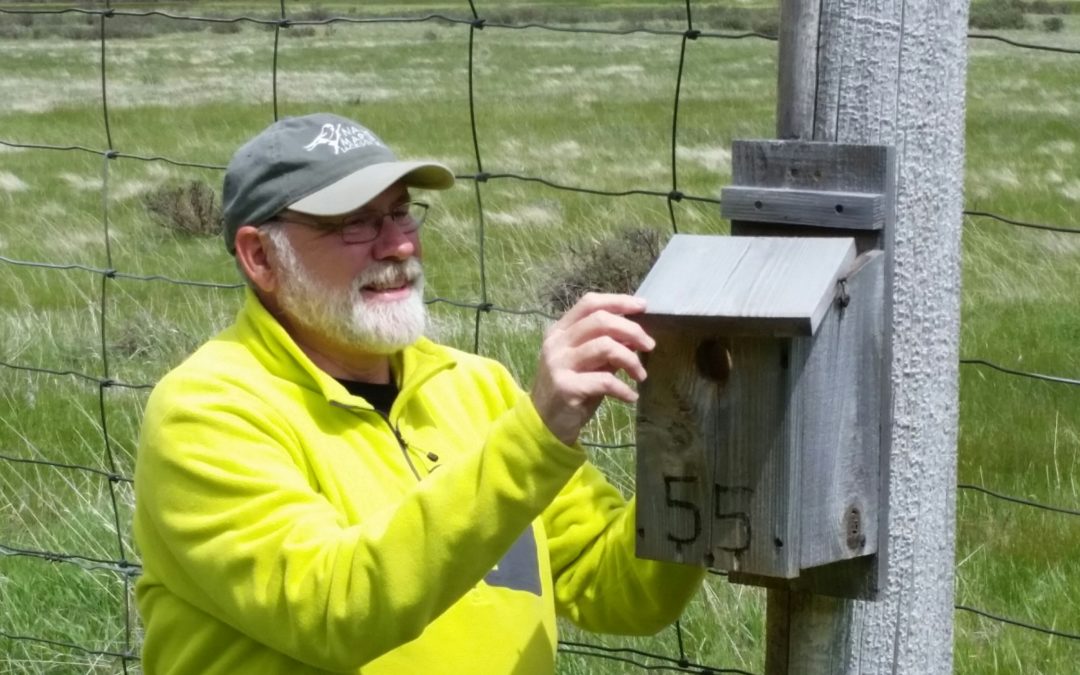
by jhwildlife | Jun 1, 2016 | Blog, Nature Mapping Jackson Hole
We checked one nest box… nothing, we checked another… nothing, we checked a third box and sadly found a ruined nest and remains of a female mountain bluebird (probably taken by a weasel). Despondency was beginning to set in when finally, we checked another nest box within our monitoring trail and lo’ and behold… a clutch of five tiny bluebird chicks was tightly slumbering together in their nest, safe and sound. This was such a happy sight to see firsthand. No wonder some cultures see the bluebird as an enduring symbol of happiness!
In order to not stress out mommy and daddy bluebird, we did not loiter for long. This season, the JHWF staff monitor 12 bluebird nest boxes on a weekly basis so we are fortunate to get to go back to see these chicks grow.
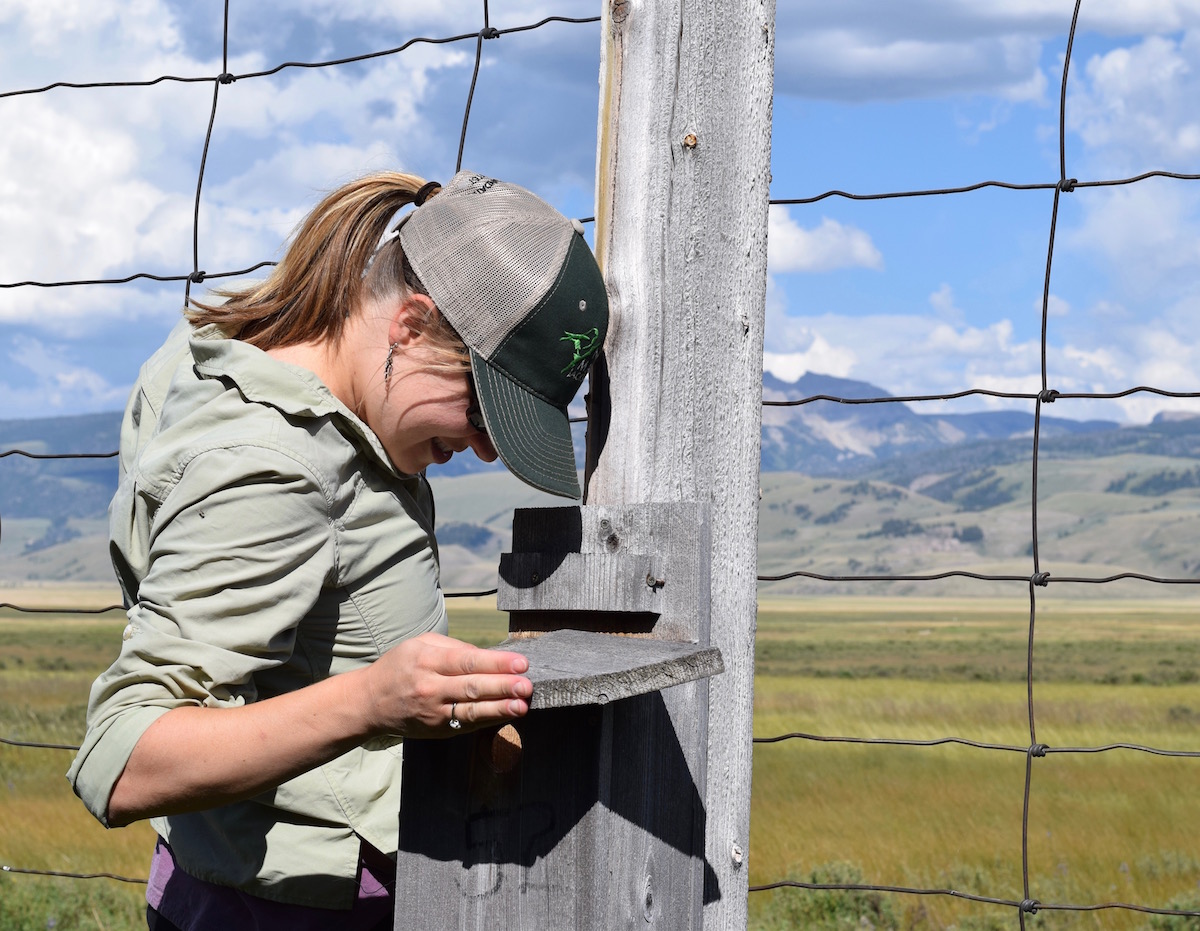
Historically, bluebirds relied on woodpeckers and other cavity-dwellers to provide the majority of their nesting places. They would select abandoned cavities in dead trees or rotten fence posts to raise their families. As development and habitat loss wiped out many of these natural nesting sites, the bluebird population declined dramatically. Fortunately, man-made nesting boxes have played a vital role in their recovery.
With the help of 10 dedicated volunteers, JHWF’s Bluebird Next Box Project monitors 104 mountain bluebird nest boxes along the perimeter of the National Elk Refuge every year, once per week from April through July. Some of the information collected includes dates, number of eggs laid, eggs hatched, birds fledged. These data are entered into the Nature Mapping Jackson Hole database and will also be given to the North American Bluebird Society and Cornell Lab of Ornithology. Data gathered by citizen scientists during nest box monitoring is needed to increase our understanding of the breeding success of the mountain bluebird.
There is a warm and rewarding feeling of regularly checking the bluebirds through their nesting cycle. At JHWF, walking our trail is hardly considered work, but instead a privilege. It is rewarding to know that we are really making a difference.
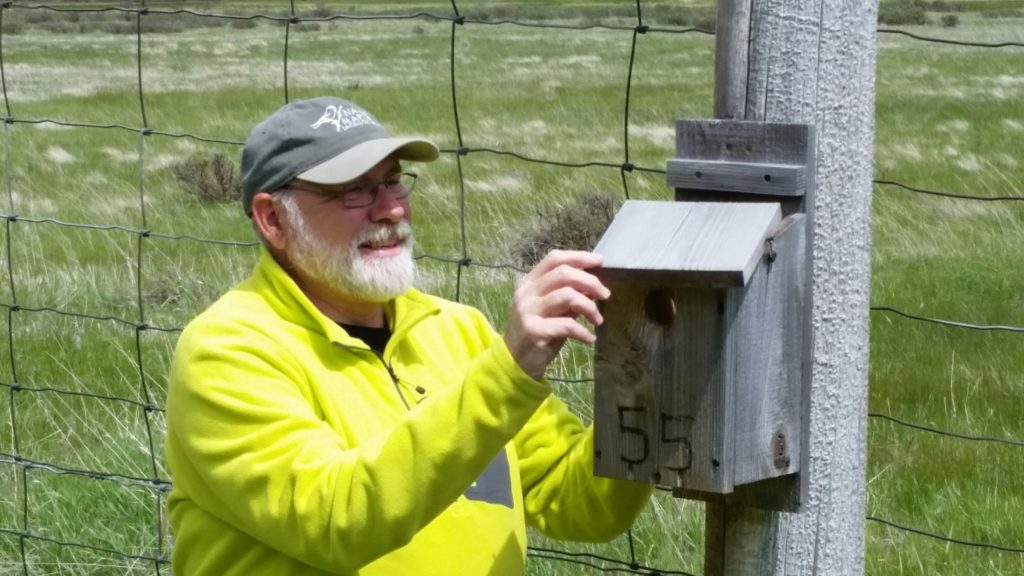
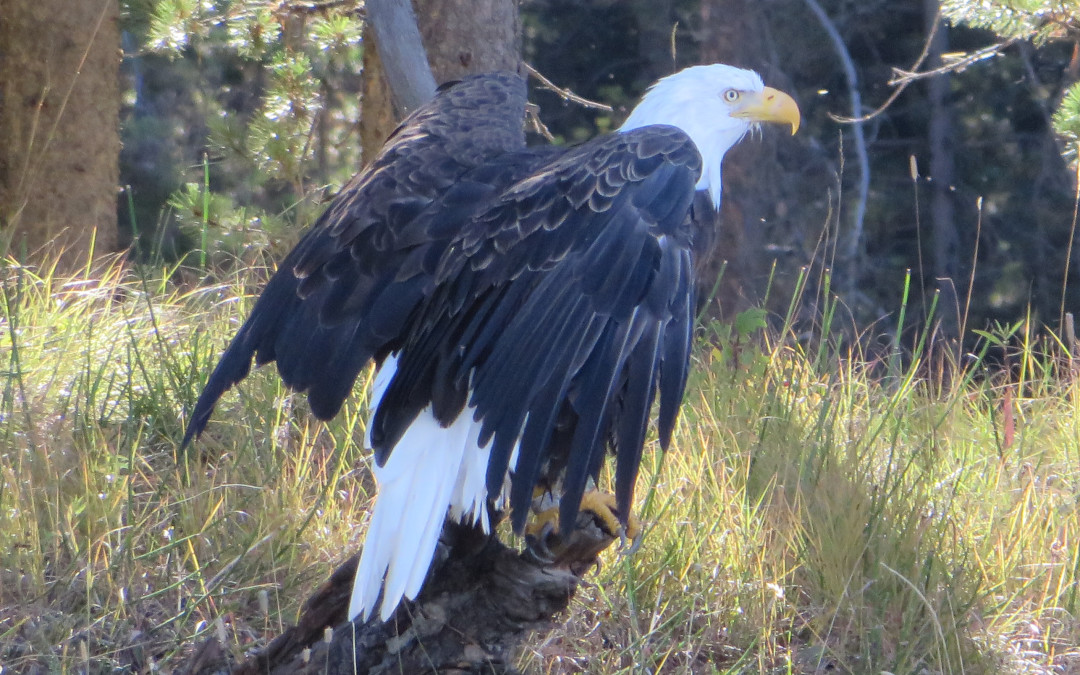
by jhwildlife | May 11, 2016 | Blog, Nature Mapping Jackson Hole
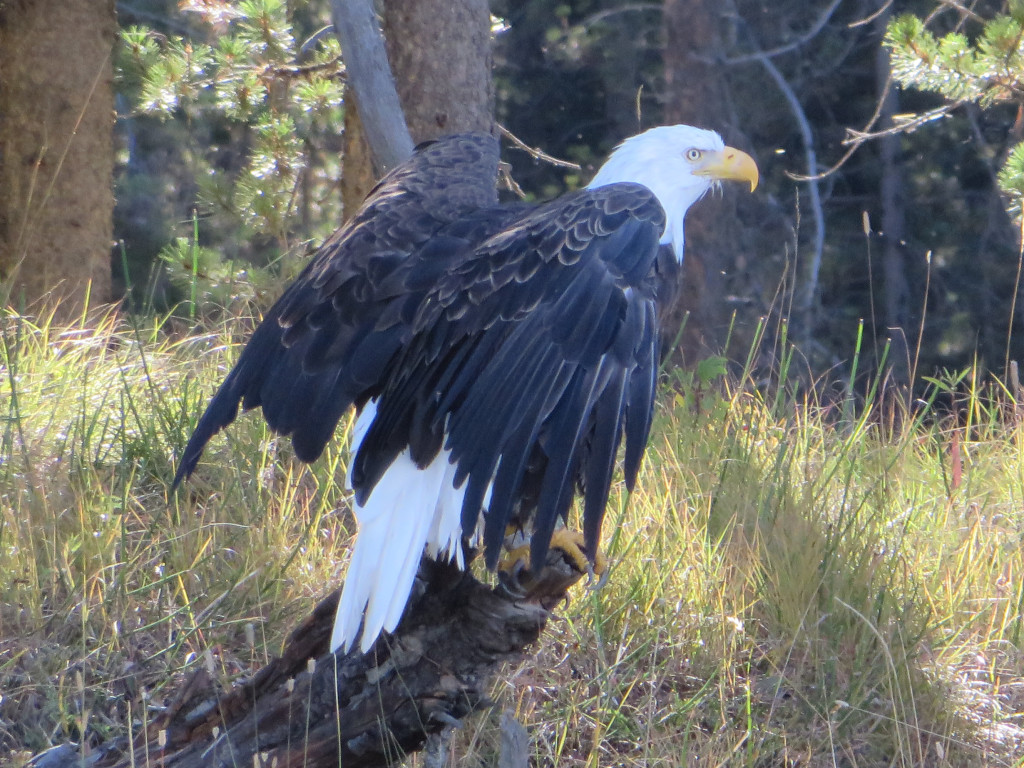
How can you see 458 birds and wildlife in three hours on a Sunday morning in one of the most beautiful locations in the nation without taking a single step? Four words–Snake River Float Trips! This little-known benefit of being a certified nature mapper is in full swing and you can take advantage of it through September.
Generously provided by AJ DeRosa’s Wooden Boat Tours, this adventurous form of citizen science is not all fun and games. Its purpose is to gain a better idea of what species of mammals, birds, and amphibians use the section of river between Wilson Bridge and South Park, which flows mostly through private land where wildlife professionals do not conduct a systematic census.
How do I Sign Up?
Sign up for one of the dates below with the volunteer director of the trips, Tim Griffith at timgrif396@gmail.com. At least one person in your party (max 6) must be a certified JH Nature Mapper and should be the main wildlife spotter and at least one person to be the recorder. The spotter should have at least a basic understanding of the birds and mammals one might see on the Snake River. It costs only $20 to cover the shuttle fees and you’re welcome to tip the guide, if desired.
May 8th Float Trip Report:
The May 8th Snake River Float Trip traveled 8 miles down the river from Rendevous Park to Wooden Boat Adventures River Camp with Kevin Coughlin, Josh Seibel, Carrie Ann Adams, and trip leader (and retired wildlife biologist) Tim Griffith. They mapped 42 species (listed below) with a highlight of spotting 12 bald eagles as there are six nests along this stretch of river and each nest has two adults associated with it.
- Canada Goose 123
- Mallard 49
- Green-winged Teal 5
- Barrow’s Goldeneye 3
- Common Merganser 31
- Double-crested Cormorant 6
- American White Pelican 5
- Great Blue Heron 7
- Turkey Vulture 1
- Osprey 2
- Cooper’s Hawk 1
- Bald Eagle 12
- Red-tailed Hawk 3
- Killdeer 10
- Spotted Sandpiper 28
- Mourning Dove 1
- Belted Kingfisher 4
- Downy Woodpecker 1
- Hairy Woodpecker 1
- Northern Flicker 4
- Black-billed Magpie 2
- Common Raven 12
- Tree Swallow 43
- Bank Swallow 9
- Barn Swallow 4
- Black-capped Chickadee 6
- Mountain Chickadee 1
- Brown Creeper 2
- House Wren 2
- American Dipper 2
- Ruby-crowned Kinglet 2
- Mountain Bluebird 2
- American Robin 19
- European Starling 1
- Yellow Warbler 2
- Chipping Sparrow 2
- Dark-Eyed Junco 2
- Song Sparrow 22
- Green-tailed Towhee 1
- Red-winged Blackbird 2
- Western Meadowlark 1
- Brewer’s Blackbird 12
- Yellow-bellied Marmot 7
- Elk 1
2016 Snake River Float Trips:
MAY: 1st, 8th, 15th, 22nd and 29th
JUNE: 12th and 26th
JULY: 10th and 24th
AUGUST: 7th and 21st
SEPTEMBER: 4th, 11th, 18th and 25th
Photo credit: STEVE MORRISS
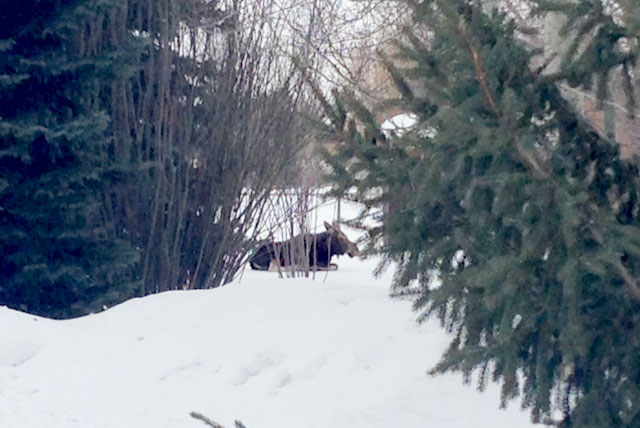
by jhwildlife | Feb 29, 2016 | Blog

Photo by Nature Mapper Kathy McCurdy on Moose Day
Eighth Annual Moose Day Survey Yields Data Similar to 2015
The eighth annual Moose Day Jackson Hole survey was conducted on Saturday, February 27, 2016 from 7:00 a.m. to 1:00 p.m. in collaboration with the Wyoming Game and Fish Department. 73 volunteers from trained Nature Mapping Citizen Scientists, Wyoming Game and Fish Department and Bridger-Teton National Forest personnel took part spending an estimated 223 hours of volunteer time. 99 individual moose were observed in 58 individual search areas.
“Moose Day is such a fun event, bringing people together around the joy of searching for wildlife,” said Jackson Hole Wildlife Foundation Executive Director Jon Mobeck. “It also serves a scientific purpose. The observation data captured on or near participating private ranch lands and residential neighborhoods supplements population surveys conducted by Wyoming Game and Fish, giving us well-rounded information in order to protect moose in the valley.”
During last year’s survey 97 individual moose were observed by 71 volunteers in 61 individual search areas. Moose numbers via this survey remain flat over the past three years.
“Moose Day is truly a community-wide effort: with 73 volunteers searching for moose by ski, foot, car, and snowmobile on a Saturday morning. We have a good time looking, enjoy swapping moose stories, and above all know we are doing something for the moose we all care about. I thank the volunteers and the landowners who are all part of this Citizen Science inventory,” said Frances Clark, coordinator of Moose Day and volunteer coordinator of Nature Mapping Jackson Hole.



